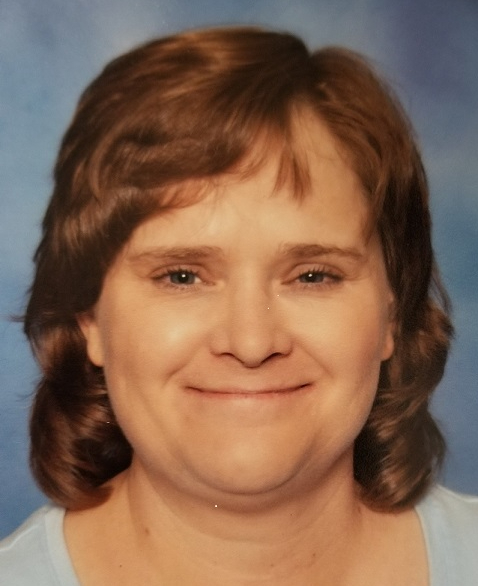Article by Robin Hayward
When high school teacher, Robin Hayward suddenly passed out during a routine medical appointment, she sustained a head trauma that would cause further complications.
In this compelling blog post, Robin shares her story of suddenly losing the hearing in her right ear, and her search to find an effective treatment option.
The Beginning of My Story
On Wednesday January 15, 2014, I awoke a little later than usual. Instead of having to arrive at my high school teaching job before 7am, I had an appointment for a breast biopsy. Once the biopsy was complete, I was asked to go into another room for a post-biopsy mammogram. While capturing these images I felt a little strange and awoke on the floor of the exam room.
Feeling Disorientated
I was so dizzy I could not stand up, everything was moving across my field of vision, the back of my head hurt badly and there was a very loud buzzing sound in my right ear, and I was aware that I couldn’t hear properly. I cannot remember a time that I felt so disoriented. As the realization set in about how poorly I felt. I began repeating “I don’t want to feel like this” over and over again. The nurse reminded me of a conversation we had during my biopsy, comforting me until the paramedics arrived.
I looked up at the firemen and emergency medical technicians (EMTs) as they placed me on a gurney, lifted me into the ambulance and transported me across the street to a local hospital. It was surreal listening to them talk about ordinary things while transporting me. Soon after arriving at the hospital, I was wheeled in for a CAT scan. The initial scan indicated a possible brain bleed but a follow-up scan with contrast showed bleeding in my right ear only.
A Slow Recovery
Doctors never determined the reason for my fall. My potassium was a little low but there wasn’t a definitive cause.
I was informed that I had suffered 2 skull fractures during the fall and spent 5 days in the hospital under observation. During my time in the hospital, I remember being thankful things were not worse. My mind was intact. I remember saying “If the only thing that remains is being deaf, I can accept that.” After spending two weeks at my parent’s home with my two children being cared for by other relatives, I returned home. My recovery was slow, and, in the end, I was not able to teach for approximately two months.
As time passed, I visited my family doctor, an ENT, a neurologist, and a physical therapist. Most of my symptoms slowly dissipated but the buzzing sound (tinnitus) in my right ear persisted. At some point after the fall, I had my hearing tested and was informed that I had profound sensorineural hearing loss in my right ear. It was then that my earlier statement about accepting deafness really hit home.
Treating the Hearing Loss
As I recovered at home, I realized that having to process sound through only one ear had a cumulative effect on my moods. I also had no concept of where sound was coming from which made me feel unsafe and unstable.
I wanted to pursue something to help with my hearing, so I visited a neuro-otologist. I was informed of a couple of options for single-sided deafness (SSD) like mine. One was a Bone-Anchored Hearing Aid (BAHA) and the other was a Soundbite. I opted for the Soundbite because it did not require placement of a post in my skull.
The Soundbite is a bone conduction hearing aid. It is a non-surgical treatment option and includes an ITM (In the Mouth) piece that is made with a mold of your teeth. The other component is a BTE (Behind the Ear) piece with a microphone placed in the deaf ear. The sound reaching the microphone is transmitted to the ITM piece, vibrating it. Bone conduction allows you to hear the sound in your good ear.
My Experience of the Soundbite
The Soundbite worked well for me for over a year, but it was overwhelming being in the classroom with all sound being filtered through my one good ear. By midway through the day my tinnitus got worse, and I got more irritable. There were days I had to create a “quiet zone” in my classroom to get through the hours.
Over the next 12 months, one of my Soundbite in the mouth pieces stopped working which limited the time I could use the Soundbite to approximately 6 hours. When contacting them about repair I found out that the company could not repair the in the mouthpiece as they were going out of business. Because 6 hours of usage was not enough to get through the entire school day, I soon stopped using the Soundbite.
I struggled with teaching for a while longer, but days were difficult and I often experienced auditory fatigue and had to ask my afternoon classes to keep their voices down. The students were gracious as they knew what I was going through.

A Cochlear Implant for Single-Sided Deafness?
Within about 6 months of teaching without any hearing assistance, I made an appointment with my neuro-otologist to ask about a cochlear implant (CI). I was informed that the only way to get a Cochlear Implant for Single-Sided Deafness at that time was through a clinical trial.
That evening I searched, “clinical trial.gov” and found a few trials for SSD that I fit the criteria for and emailed them. I received a response from a couple trials that were full or could not accept me because my hearing loss was due to head trauma.
Within three months I was at the Mayo Clinic in Rochester, Minnesota for evaluation. While I qualified for the implant, my insurance would not cover the device and implantation. Back to “clinical trial.gov.”
I then found a trial sponsored by an ENT specialist at Mass Eye and Ear in Boston. This trial had funding to cover the implant if insurance denied it.
I visited Boston for evaluation in April 2016 and was implanted in late November of 2016. My CI Activation occurred on December 30th, 2016.
Every Day is an Adventure
After activation, my mother and I spent the next 6 days exploring Boston while I progressed through louder and louder programming in my CI.
There were times I wanted to take my processor off because of how strange and disorienting some of the sounds were.
I however was committed to wearing my CI nearly every waking moment. I knew that my brain just needed time to adapt. I probably sounded like a crazy person walking around Boston singing to myself just to hear what it sounded like or tapping silverware together on each side of my head. I treated every day as an adventure and every listening opportunity as training.
Final Thoughts
This coming winter marks 5 years since my surgery and activation. Not once have I regretted my decision to pursue a CI. While it is not the same as natural hearing, it is a part of me now.
My CI Journey has taken me to places I’d never been and allowed me to meet so many wonderful people along the way. I hope that sharing my personal experience and being a research subject has helped make CI for SSD more accepted. I will forever be thankful for this opportunity.
Note: It’s important to note that everyone’s experiences with CIs are unique. CIs are a relatively new treatment for SSD and deciding to opt for an implant is a complex decision. Some people adjust to life with SSD without any assistive devices or with less invasive ones such as CROS hearing aids. If you have SSD and are interested in exploring CIs as a treatment option, speak with your healthcare team to see if a CI might be the right choice for you.
For some quick information about sudden hearing loss, visit the Sudden Hearing Loss Support homepage.


One reply on “My Cochlear Implant Journey”
Great information about cochlear implants. it’s really helpful for the reader.
LikeLiked by 1 person